If you’re considering starting a layer chicken farm, it’s essential to understand the cost and profit aspects. Evaluating the economics of layer farming and preparing a comprehensive project report can help you make informed decisions. This analysis considers the expenses of setting up and maintaining a layer chicken farm and the potential profits.
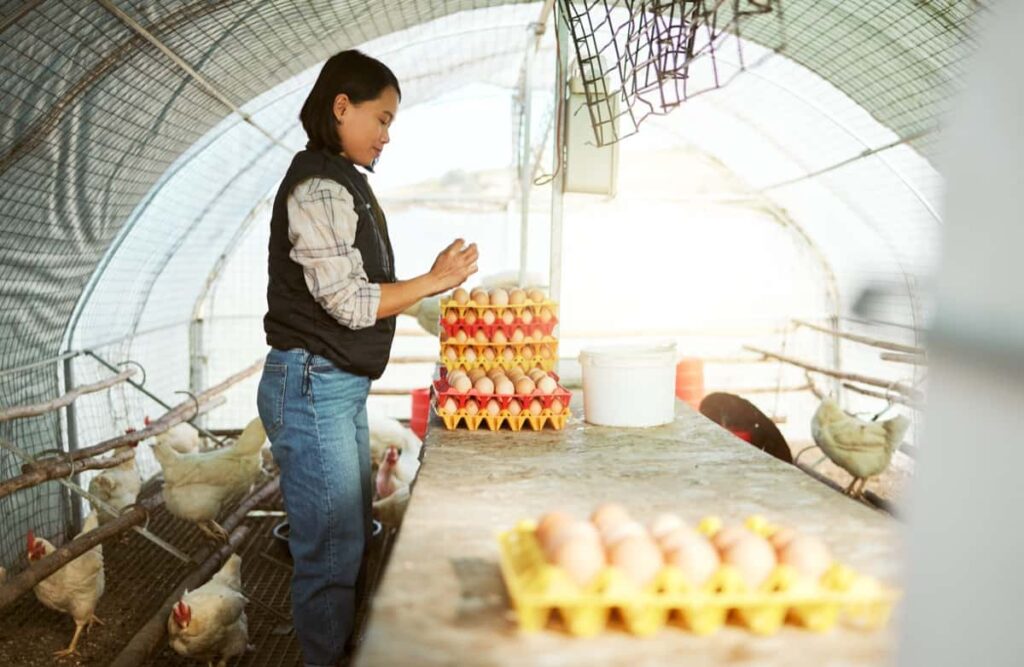
By understanding the financial aspects of the business, you can determine the project’s feasibility and plan for long-term success. Let’s delve into the project report of layer chicken farming and explore the economic factors involved.
What is Poultry Layer Farming?
Poultry layer farming is crucial in providing high-quality proteins, minerals, and vitamins through eggs and meat, essential for a balanced human diet. The advancements in commercial layer strains have resulted in improved traits, such as high egg production and efficient feed conversion. Both public and private sectors have contributed to developing superior germplasm in chickens, meeting the demands of the Indian poultry industry.
Depending on the size of the farm, layer farming can serve as the primary source of income for families or provide additional income and employment opportunities for farmers throughout the year. Furthermore, poultry manure holds significant value as a fertilizer, contributing to increased crop yields. By engaging in poultry layer farming, individuals can contribute to the population’s nutritional needs and benefit from the various economic opportunities it presents.
Scope for Layer Farming and its Importance
India is the third large egg producer after China and the USA. Poultry farming is experiencing rapid growth in India and has become one of the fastest-growing segments in the agricultural sector. India is now the third-largest producer of eggs in the world, with an estimated annual production of 56 billion eggs.
The sector has been growing at approximately 6% per year. India has about 230 million layers, and the per capita availability of eggs increased from 7 eggs in 1961 to 52 in 2010. However, this is still significantly lower than the recommended intake of 180 eggs per capita per annum by the Indian Council of Medical Research (ICMR).
While value-added products utilizing poultry eggs and culled birds for human consumption have been developed, only a small percentage (6%) of the eggs produced in India are converted into processed egg products, primarily for export.The poultry industry in India has undergone a significant transformation, with investments made in breeding, hatching, rearing, and processing.
Farmers have shifted from rearing non-descript birds to hybrids that ensure faster growth, better survival rates, excellent feed conversion, high egg production, and increased profits. Both public and private players provide high-quality chicks, equipment, vaccines, and medicines.
Farmers have access to technical and professional guidance, resulting in improved managerial practices and reduced disease and mortality rates. Private enterprises, government intervention, indigenous poultry genetic capabilities, and support from the veterinary health, poultry feed, poultry apparatus, and poultry processing sectors all contributed to the industry’s expansion.
In case you missed it: Project Report of Broiler Chicken Farming: Production Economics, Cost and Profit Analysis
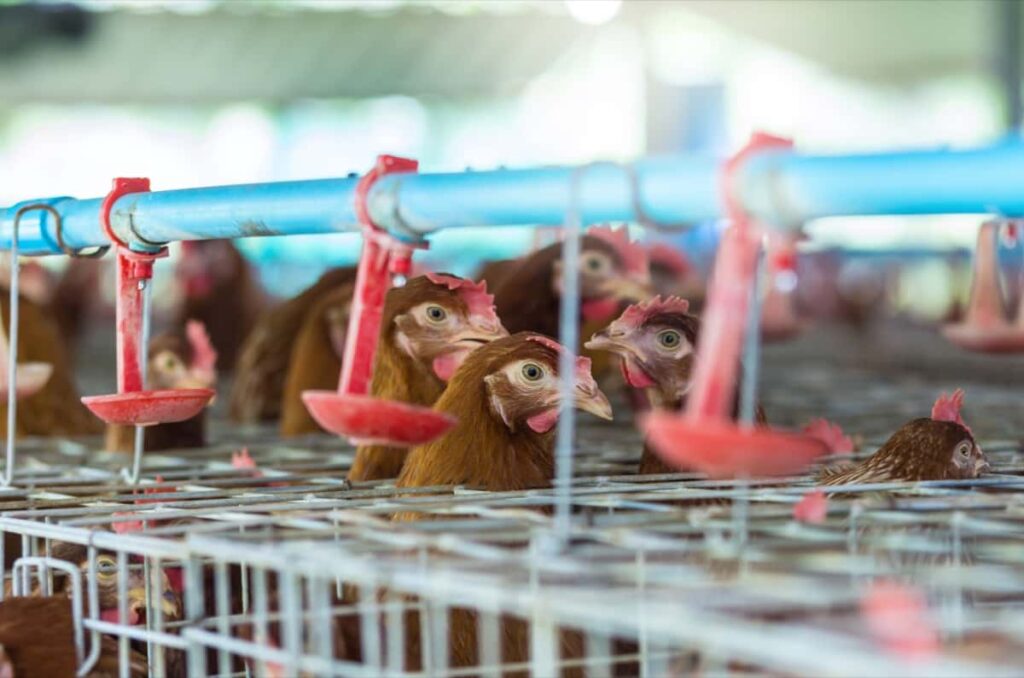
Layer Poultry Farming Business
- Layer poultry farming involves raising hens specifically for commercial egg production. These special hens are raised from one day old and start laying eggs commercially at around 18-19 weeks of age.
- They continue laying eggs consistently until they reach 72-78 weeks of age. During their egg-laying period, they can produce approximately one kilogram of eggs while consuming about 2.25 kilograms of food. Layer farming is gaining popularity due to its low production cost and the growing demand for eggs.
- India is the world’s third-largest producer of eggs, producing 3.8 billion kilograms. The leading egg-producing states in India are Andhra Pradesh, Tamil Nadu, Haryana, Maharashtra, and Punjab.
- The country has witnessed increased egg production due to increased human consumption and lower production costs. The national policy places great importance on poultry layer farming, creating opportunities for improvement and development in the industry.
- India ranks third in egg production and fourth in chicken production globally. The per capita consumption of eggs has increased from 30 eggs per annum to 68 eggs per annum, while chicken consumption has risen from 400 grams per annum to 2.5 kilograms per annum in the past five years.
- The Indian poultry market offers significant opportunities, as human nutritionists recommend a minimum consumption of 180 eggs and 10 kilograms of chicken per annum for a healthy adult. Poultry production in India is a well-organized sector, valued at Euro 14,500 million. The demand for processed chicken meat has grown by 15-20% annually.
In case you missed it: Free-Range Chicken Farm Operations Management: Month-Wise Maintenance For Better Profits
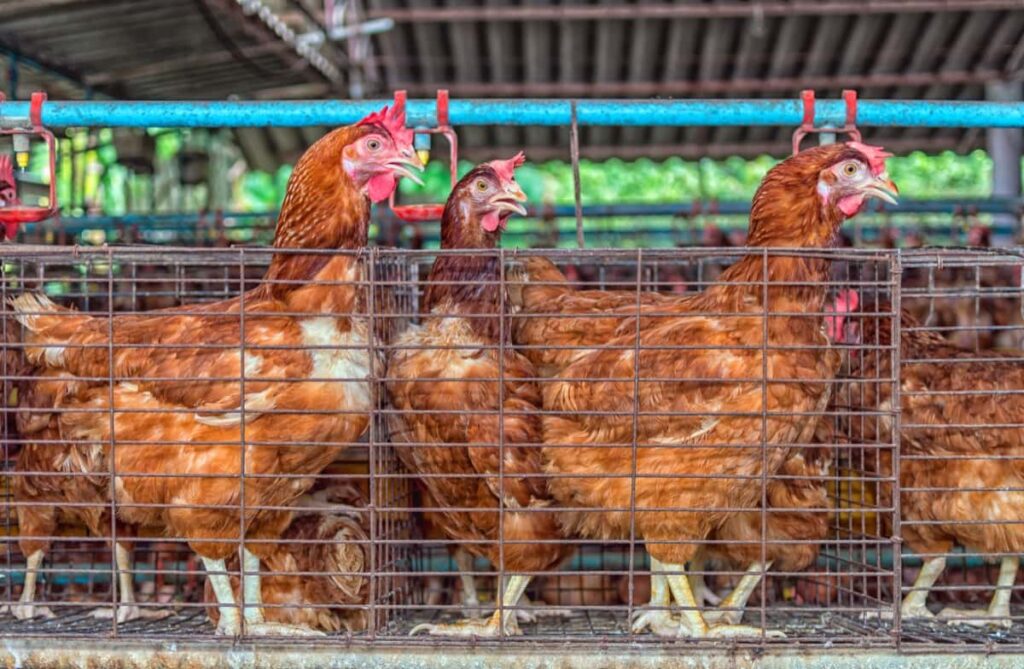
Benefits of Layer Farming
- Low investment: Layer farming requires less investment than other livestock rearing. Chickens start laying eggs in 8 to 10 weeks, while broilers can be sold after six weeks, providing a rapid return on investment.
- High production rate: The short interval between generations allows for a phenomenal increase in production within a short period. Broilers have a low feed intake but produce a maximum amount of food.
- A constant source of income: Poultry farming generates income throughout the year, as chickens lay eggs for 6 to 8 months, and broilers reach marketable size in 6 to 10 weeks.
- Minimal space requirement: Poultry farming can be conducted on a small scale with minimum space, making it suitable for backyard rearing.
- Water efficiency: Poultry farming requires minimal water for drinking and cleaning. One liter of water is sufficient for five birds per day.
- Value-added byproducts: Poultry droppings are rich in nitrogen and organic material, serving as valuable fertilizers. Feathers are used for various purposes, such as making pillows and curios.
- Employment opportunities: Poultry farming provides full-time or part-time employment opportunities for farmers.
- Nutritional value: Poultry products, including eggs and meat, are highly nutritious, rich in protein and essential amino acids, and low in cholesterol.
Egg Production in Layer Poultry Farming
- Around 5% of hens start laying eggs within the first 20 weeks of age.
- Approximately 10% of birds start laying at 21 weeks of age.
- Peak production is achieved between 26 and 30 weeks of age, but this may vary depending on the strain.
- After reaching maximum egg production, hens may temporarily stop laying for a few days.
- Egg production gradually decreases over time, and the size of eggs increases.
- Hens continue to grow until around 40 weeks, with the size and weight of eggs increasing until approximately 50 weeks.
- Segments of Poultry Production Layers contribute Around 70% of layer birds are raised in Andhra Pradesh, Telangana, Tamil Nadu, Karnataka, Maharashtra, and Haryana. The broiler market is characterized by feed (65%) and chicks (25%), with consolidation observed in the market. Smaller producers often engage in contract farming.
In case you missed it: Country/Free Range Chicken Farming Project Report: Business Plan, Investment, Profit, and Loan in India
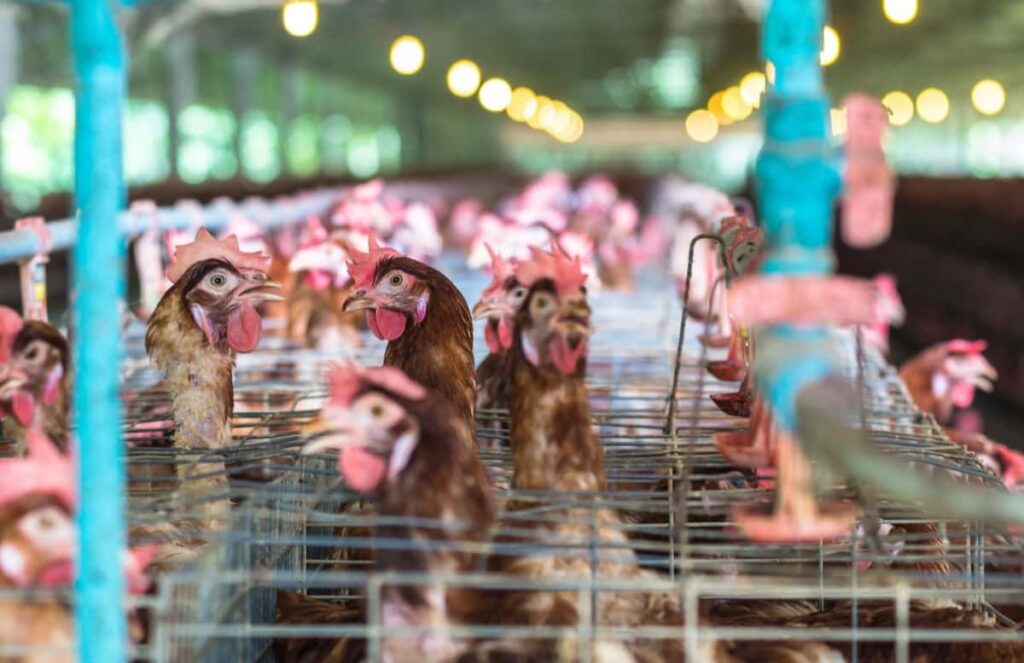
SWOT Analysis of Poultry Layer Farming
Strengths
- Poultry farming has the potential to address protein deficiencies in countries with high levels of malnutrition, as eggs and broilers are excellent sources of protein.
- It contributes to the rural economy by increasing income and improving the socio-economic status of rural communities.
- Poultry is an efficient converter of plant products and wastes into edible food, making it a valuable solution for malnutrition.
- Chicken meat is widely accepted in India, free from religious taboos, and more affordable than goat meat.
- Poultry litter has high manure value, which can be utilized in agricultural activities.
- It has the potential to create non-farm employment opportunities, reducing rural-urban migration.
- Poultry farming offers relatively quick returns and requires a low initial investment.
Opportunities
- Per capita consumption of poultry products in India is increasing, indicating a significant market potential.
- India can explore opportunities in the international market for poultry products.
- Growing awareness of balanced nutrition has led to vegetarians accepting eggs as part of their diet.
Weaknesses
- Poultry farming is labor-intensive.
- The poultry industry needs to be more cohesive.
- Inadequate transportation infrastructure and a lack of cold chain facilities hinder the handling chilled or frozen products.
- High initial investments in infrastructure, such as sheds and equipment, coupled with low growing charges, result in low income for farmers.
- Stringent mortality norms and limited avenues for voicing grievances leave farmers vulnerable.
Threats
- Natural calamities pose a threat to poultry farming.
- Failure to take adequate health precautions can spread infectious diseases, as seen with avian flu and other diseases.
- Shortages in major feed ingredients, particularly maize, can increase costs and impact profitability.
In case you missed it: Sustainable Poultry Farming: Benefits and How to Reduce Your Carbon Footprint with Chickens
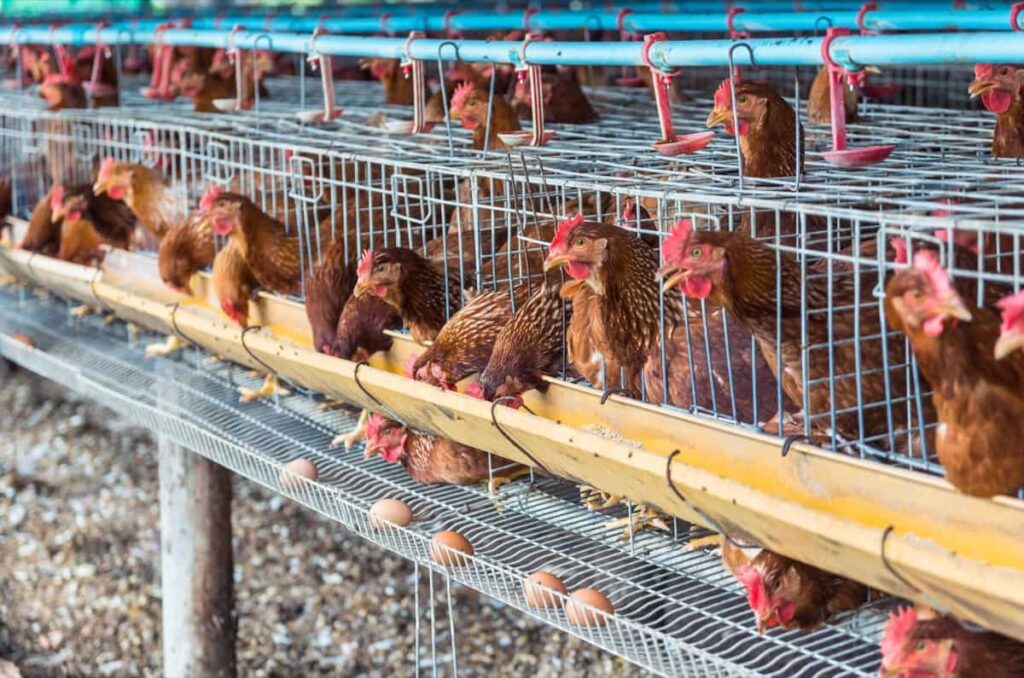
Economics and Project Report of Layer Chicken Farm
Starting a layer chicken farm can be profitable with proper planning and implementation. Depending on farm size, layer (egg) farming can be a primary source of family income or revenue and gainful work for farmers all year.
- Initial Investment: The cost of setting up a layer chicken farm includes expenses for land, infrastructure, equipment, chicks, feed, and labor.
- Operational Costs: Ongoing expenses include feed, labor, utilities, veterinary care, and marketing.
- Revenue Generation: Income is primarily generated through the sale of eggs. The number of hens, egg-laying capacity, and market demand determine the revenue potential.
- Profitability Analysis: Factors such as feed conversion ratio, mortality rate, egg price, and production volume impact the profitability of the farm.
- Breakeven Point: It takes time to reach the breakeven point where the farm’s revenue covers all expenses. Efficient management and optimal production levels are essential to achieve profitability.
- Risk Assessment: Risks in layer chicken farming include disease outbreaks, market fluctuations, and input cost variations. Implementing biosecurity measures and diversifying marketing channels can mitigate risks.
- Projected Returns: A well-executed layer chicken farm has the potential to generate steady income stream and return on investment over time.
- Financial Management: Keeping accurate records, monitoring costs, and evaluating performance is crucial for effective financial management.
- Market Analysis: Analyzing market trends, consumer preferences, and competition helps make informed decisions and identify growth opportunities.
Project Report of Layer Chicken Farming: Cost Analysis
In layer chicken farming, 5,000 birds are raised in 2 batches per year, each comprising 2,500 birds. Two thousand five hundred birds are designated for laying eggs, while 2,250 birds are considered for culling. The brooding cum growing period lasts 20 weeks, followed by a laying period of 52 weeks. The housing system used is Deep Litter, with a space requirement of 1 sq. ft. per bird in the brooder cum grower house and 0.8 sq. ft. per bird in the layer shed (cage system).
The cost analysis of layer chicken farming includes the capital cost of land, construction, equipment, and infrastructure and the recurring expenses for chicks, feed, medicine, labor, and insurance. The total cost of the project, combining both capital and recurring expenditures, amounts to Rs. 2,000,000-2,500,000.
In case you missed it: Chicken Farming in Indonesia: Poultry Business Plan, Setup Cost, License, Profit, and Requirements
| Particulars | Unit | Unit Rate | Quantity | Amount in Rs. |
| I. Capital Cost | ||||
| Land | Owned | |||
| Site development | Ls. | 50,000 | 1 | 50,000 |
| Construction of brooder cum grower shed | Sq.ft. | 125 | 2,500 | 3,12,500 |
| Construction of layer sheds | Sq.ft. | 140 | 4,000 | 5,60,000 |
| Store room | Sq.ft. | 250 | 100 | 25,000 |
| Brooder cum grower equipment | Rs./chick | 20 | 2,500 | 50,000 |
| Laying house (cage) | Nos. | 90 | 3,750 | 3,37,500 |
| Water supply system | Ls | 50,000 | 1 | 50,000 |
| Contingencies | % | 5 | – | 69,250 |
| TOTAL (A) | 1,454,250 | |||
| II. Recurring Expenditure | ||||
| Cost of day-old Chicks | Rs./bird | 40 | 5,000 | 2,00,000 |
| Grower feed for the first two batches | 4,20,000 | |||
| Layer feed @ 25% of the first batch | 115,096 | |||
| Medicine, vaccine, labour & misc charges | Rs./bird | 8 | 5,000 | 40,000 |
| Insurance | % | 1 | – | 5,000 |
| TOTAL (B) | 7,80,096 | |||
| TOTAL COST OF PROJECT (A+B) | 2,234,346 |
In case you missed it: Common Poultry/Chicken Diseases, Symptoms, and Treatment: Check How this Guide Helps Poultry Farmers
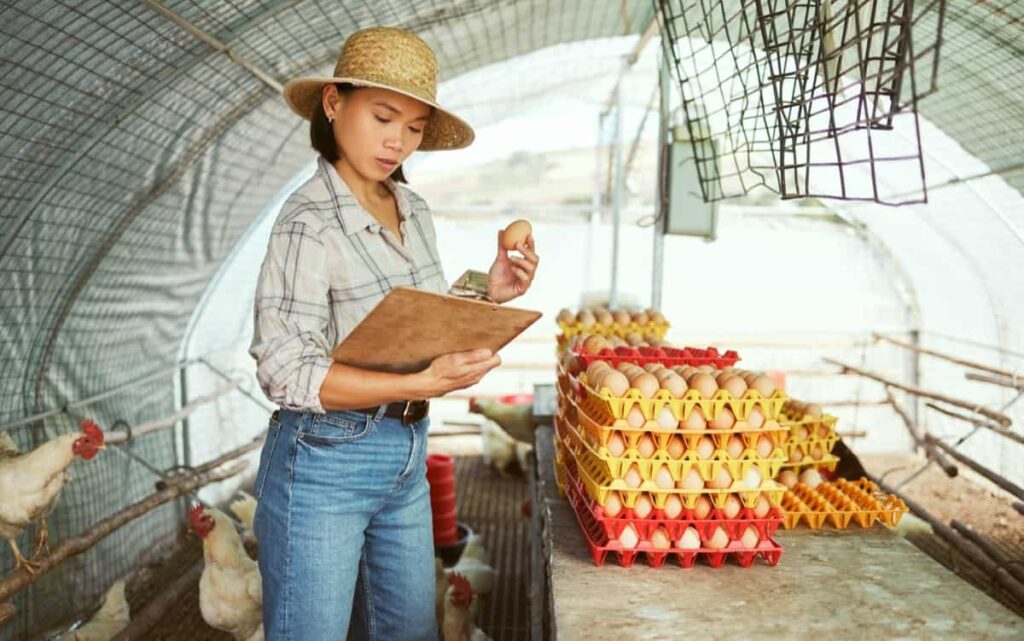
This table provides a breakdown of the capital costs involved in constructing various facilities for the layer chicken farm, as well as the recurring expenditures on chicks, feed, medicine, labor, and insurance. The total cost of the project, including both capital and recurring expenses, amounts to Rs. 2,234,346.
Returns and Profit Analysis of Layer Chicken Farming
The layer chicken farming project demonstrates promising returns and profitability. The projected net income for each year ranges from Rs. 200,000 in the first year to Rs. 2,000,000 in the fifth year. The financial analysis reveals a positive net present value (NPV) at a 15% discount, ranging from Rs. 700,000 to Rs. 2,300,000 over the five years.
The benefit-cost ratio (BCR) exceeds 1, indicating a favorable return on investment. The internal rate of return (IRR) is notably high at 61.03%. These results suggest that the project has strong potential for profitability and is expected to generate substantial returns.
Conclusion
The layer chicken farm cost and profit analysis indicates a positive financial outlook with significant projected returns. The project demonstrates favorable economics, suggesting it has the potential to be a profitable venture.
- Profitable Village Farming Business Ideas in 2024
- High-Yield Aquaculture: Fast-Growing Fish for Farming
- Effective Fish Pond Construction Techniques for Beginners
- Irrigation and Water Management in Pineapple Farming
- Blossom to Harvest: Mastering Flowering and Pollination in Papaya Farming
- Pig Fattening Essentials: From Selection to Sale for Beginners
- Raising Wagyu Cattle: A Complete Guide for Premium Beef Production
- Soil Types and Their Water Holding Capacity
- Optimizing Irrigation Schedules for Coconut Groves for Enhanced Yield
- Espresso Your Garden: Coffee Grounds for Healthier Acid-Loving Plants
- The Best Soil Mix for Snake Plants: How to Mix Your Own Snake Plant Soil
- Green Thumb Success: Expert Tips for Cultivating Greenhouse Beans All Year Round
- Bloom All Year Round: The Ultimate Guide to Indoor Hyacinth Care
- Eco-Friendly Gardening: How to Make Liquid Fertilizer from Kitchen Waste
- Ultimate Guide to Grow Anise in Pots: Explore Seed Propagation to Harvesting
- Guide to Raising Chester White Pigs: Discover Breed Facts to Growth Management
- Mastering the Elegance: The Ultimate Guide to Weeping Cherry Tree Care, Planting, and Maintenance
- Ultimate Guide to Planting Garlic in Grow Bags: Growing Strategies for Beginners
- How to Fix Spider Plant Leaf-Related Problems: Natural and Organic Remedies
- 10 Reasons Why Your Tulsi Plant is Shedding Leaves: Home Remedies and Solutions
- Optimizing Growth and Yield: The Advantages of Palm Bunch Ash Fertilizer
- Utilizing Neem Oil Extract as a Natural Pesticide for Hydrangea
- From Soil to Harvest: Various Ways in Which Farmers Can Use AI Tools
- Steps to Encourage and Induce Citrus Flowers: A Comprehensive Guide
- How to Fix Snake Plant Leaf-Related Issues: Natural and Organic Remedies
- Transform Your Garden into a Fragrant Oasis with Raat Ki Rani (Night Blooming Jasmine)
- Discover the Ideal Chicken Breeds for Philippine Farms
- How to Create a Poultry Egg Farm Business Plan for Profits
- Grow Lemon Cucumbers Like a Pro: Insider Techniques for Bountiful Yields
- Ultimate Guide to Caring for Your Pink Princess Philodendron: Tips for Thriving Variegation
- Areca Nut Profit Per Acre: Calculating Yield and Cost of Cultivation
- How Kaveri Chicken is Becoming a More Profitable Breed in Indian Backyards
- Transform Your Barn: 9 Steps to Convert a Horse Stall into a Chicken Coop
- Exploring Suffolk Sheep Disadvantages with Limitations and Challenges
- Guide to Solving Potted Lemon Tree Problems: How to Revive Lemon Tree in Containers
- Steps to Encourage Female Pumpkin Flowers: Best Strategies for More Flowers and High Yields
